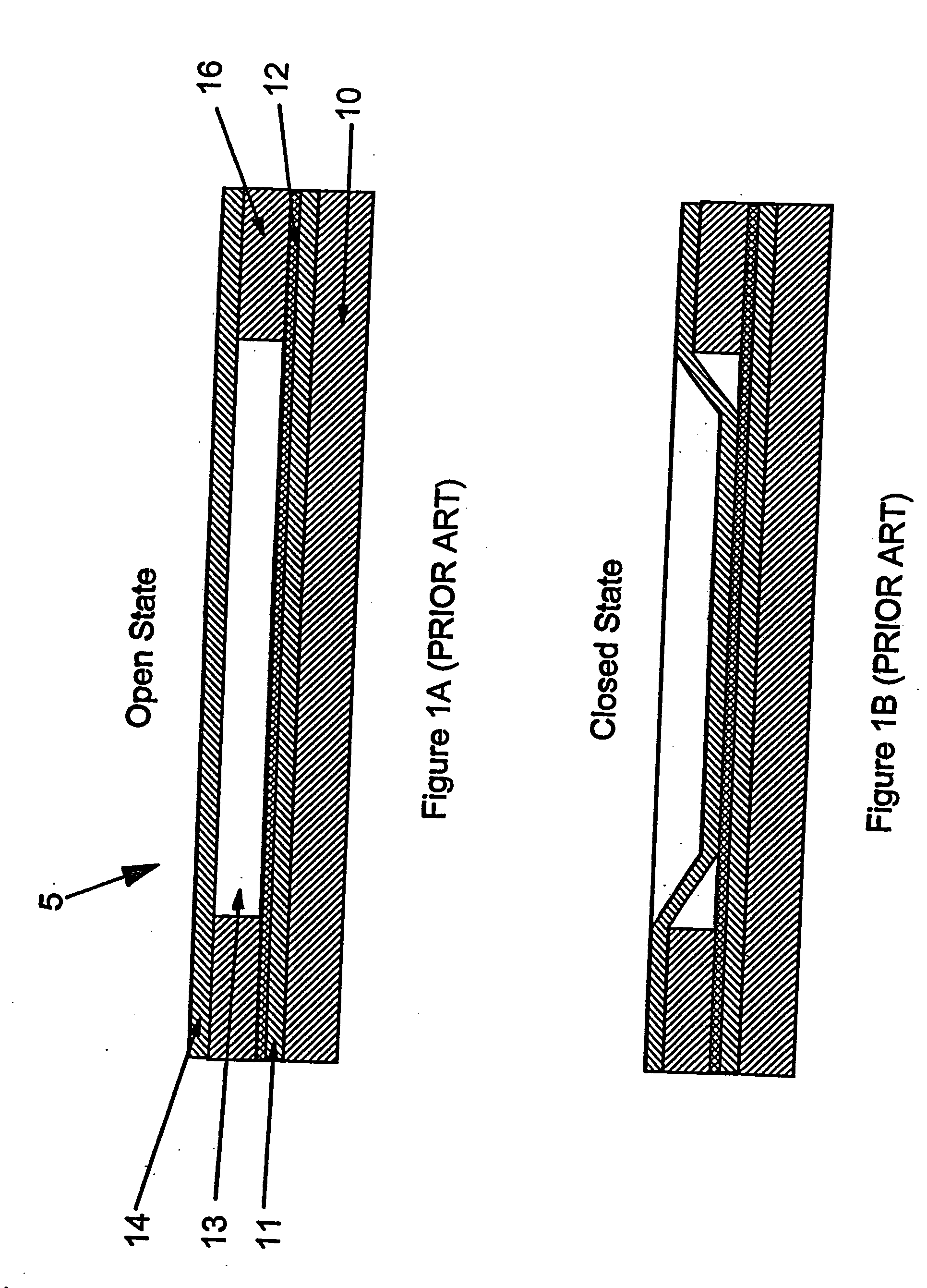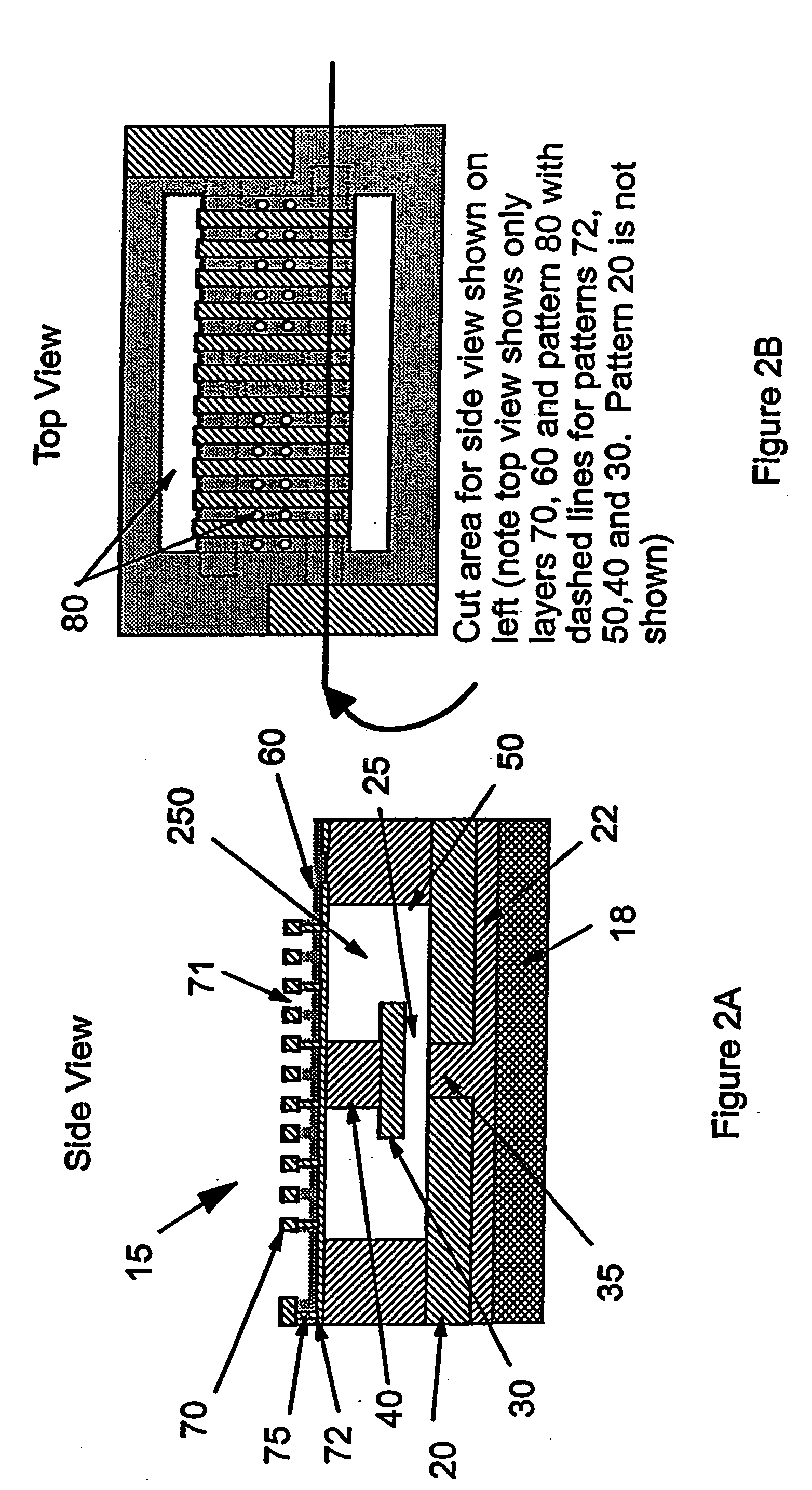Diaphragm activated micro-electromechanical switch
a micro-electromechanical switch and diaphragm technology, applied in relays, optical elements, instruments, etc., can solve the problems of affecting the reliability of the switch, the delay of the immediate incorporation of wireless devices, and the low performance of the switch, so as to achieve low loss on-state, low insertion loss, and high isolation off-state
- Summary
- Abstract
- Description
- Claims
- Application Information
AI Technical Summary
Benefits of technology
Problems solved by technology
Method used
Image
Examples
Embodiment Construction
[0025] To fully illustrate the unique design of the inventive switch, a detailed description of the MEMS switch will now be described hereinafter with reference to FIGS. 2A-2B.
[0026] Device 15 is fabricated on a substrate 18 onto which a dielectric 22 is deposited with inlaid metal traces 20. This forms a surface with planar conductive electrodes separated by a dielectric region 35. Dielectric space 35 is bridged by metal contact electrode 30 when the dielectric actuator membrane 60 deflects downward and causes contact electrode 30 to touch or come in close proximity to metal traces 20. The contact formed allows an RF signal to propagate between the two metal electrodes 20 through metal contact electrode 30. Metal contact electrode 30 is within cavity 250 and physically attached to dielectric post (or plunger) 40, which in turn is physically attached to the membrane 60. Cavity 250 is bounded on the sides by dielectric standoffs 50. Also shown in FIG. 2B are access holes and slots 8...
PUM
| Property | Measurement | Unit |
|---|---|---|
| voltages | aaaaa | aaaaa |
| voltage | aaaaa | aaaaa |
| conductive | aaaaa | aaaaa |
Abstract
Description
Claims
Application Information
 Login to View More
Login to View More - R&D
- Intellectual Property
- Life Sciences
- Materials
- Tech Scout
- Unparalleled Data Quality
- Higher Quality Content
- 60% Fewer Hallucinations
Browse by: Latest US Patents, China's latest patents, Technical Efficacy Thesaurus, Application Domain, Technology Topic, Popular Technical Reports.
© 2025 PatSnap. All rights reserved.Legal|Privacy policy|Modern Slavery Act Transparency Statement|Sitemap|About US| Contact US: help@patsnap.com



